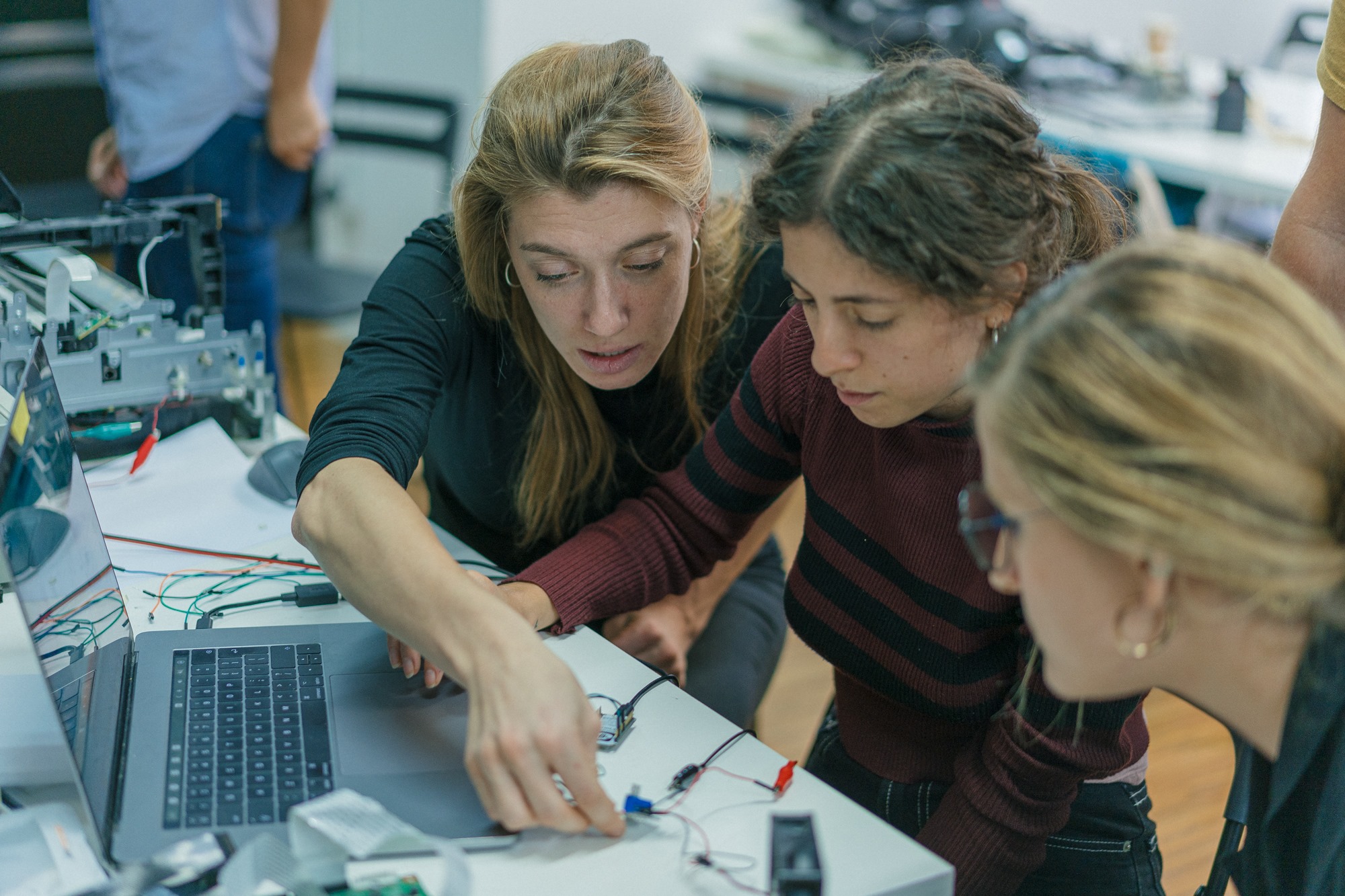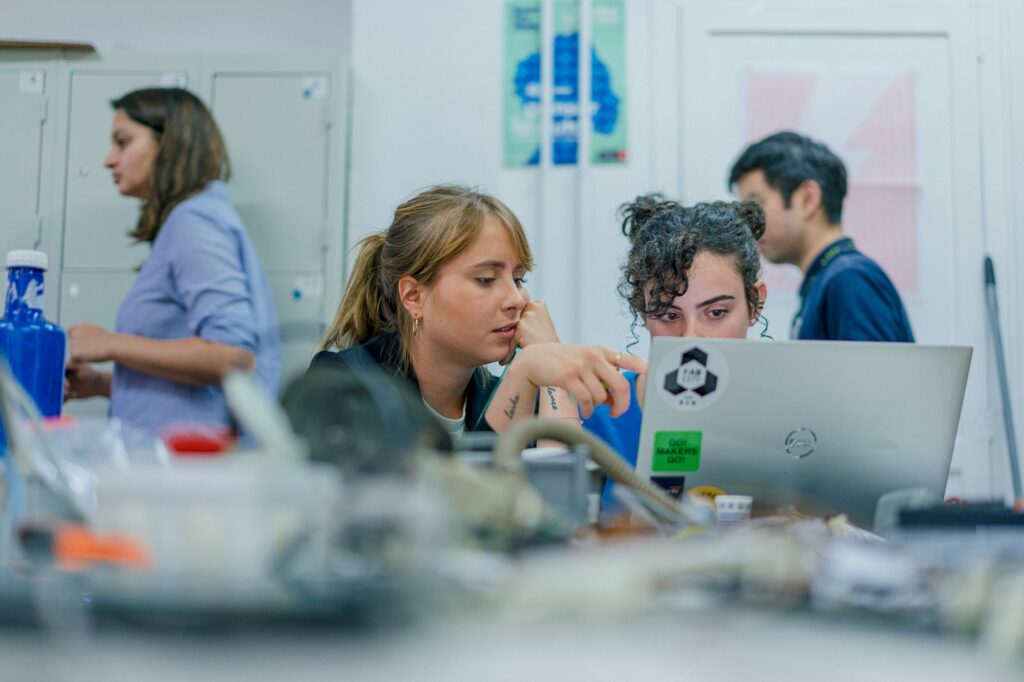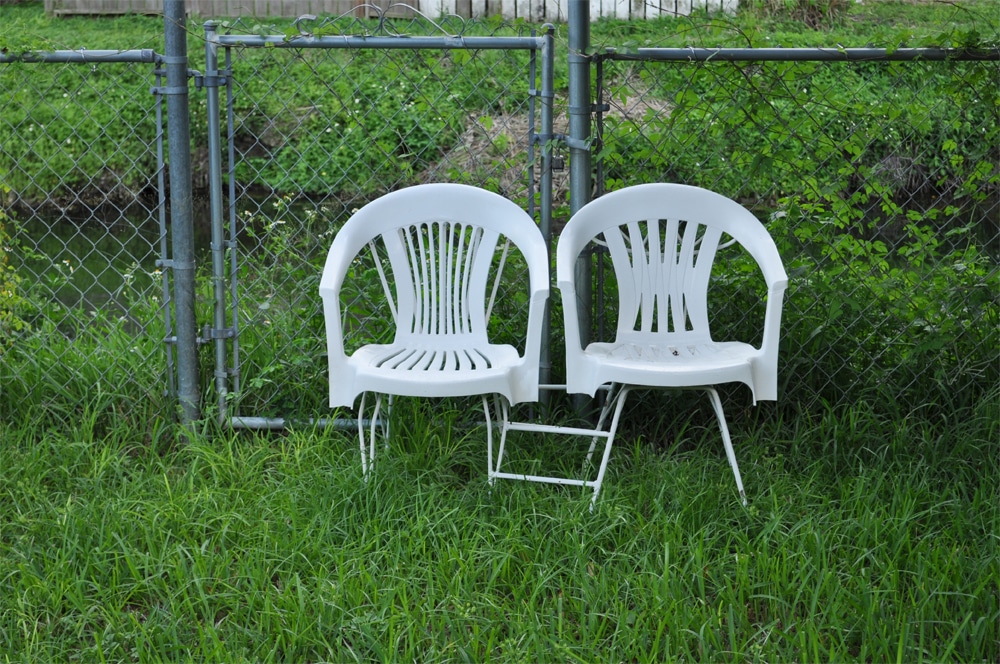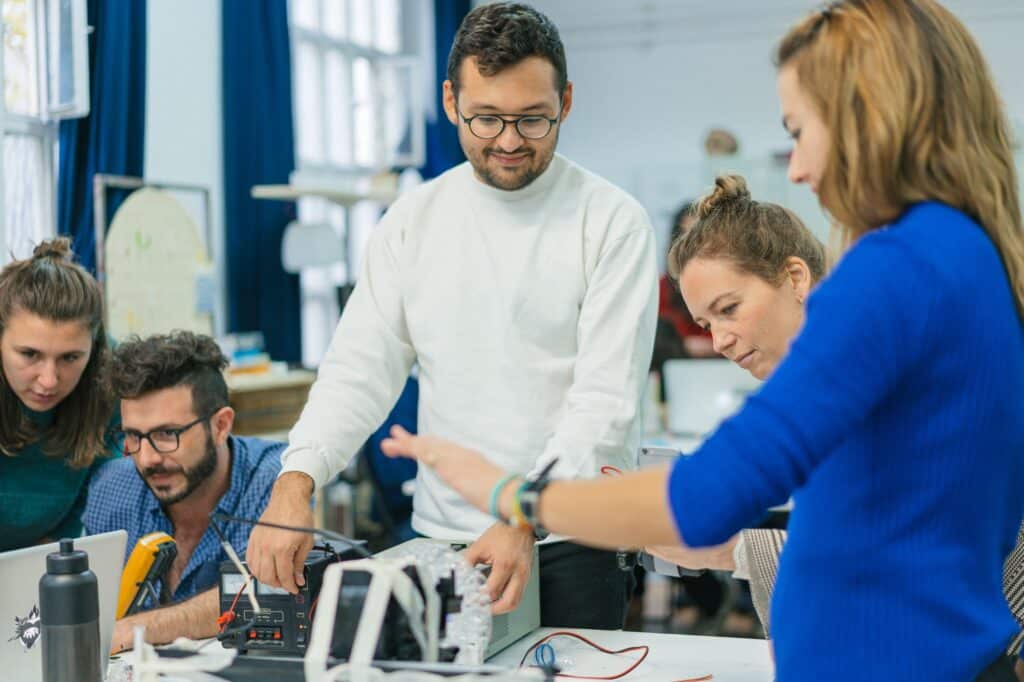
Hyper Domestic x Hyper Global
LINK Journal in collaboration with MDEF
Distributed learning
We are rapidly adjusting to the new reality of working remotely – that’s if our jobs are fortunate enough to be completed from home. Our daily activities are now orchestrated from the perimeter of our homes, surrounded by families, loved ones, friends or solo. This is a unique situation for the 21st-century, in which we may have spent more time than ever before in the past weeks connecting with old friends and family, physically or digitally. This time can also be seen as an opportunity to reflect, analyse and develop new strategies for a radically unfolding changed future.
The emergent reality of the COVID crisis has led to a new form of distributed education, with students now undertaking education from their home countries dotted across the world. This is being implemented by the Master in Design for Emergent Futures students in a collaborative project by Fab Lab Barcelona at IAAC and LINK Journal. The students have been guided and inspired by Cuban activist and artist Ernesto Oroza, whose Technological Disobedience project has made public two iconic books released in the ’90s in Cuba – Con Nuestros Propios Esfuerzos and El Libro de Familia. There are some similarities to the situation in Cuba to the situation we, as a global population, are in now. We are undergoing a fundamental shift in how we value society, how we care for each other and our mobility in the world. The result of the MDEF Hyper Domestic x Hyper Global project will be an openly accessible living archive of responses, tools and guides for a post-Corona society, organised in the thematic chapters of Con Nuestros Propios Esfuerzos.
Cuba in the ’90s
Cuba underwent a period of rigid austerity with the withdrawal of the Soviet Union and the economic crises of the ‘90s. This led to the struggles and sacrifice of many Cubans in the hope for a better, more promising future. Yet, due to this sacrifice, a fundamental shift in perceptions began to occur – in which objects, materials and items were revalued, repaired and adapted, rather than discarded. Through collective design and iteration, new items were constructed – pieces of vinyl transformed into replacement fan blades, aluminium dinner trays transformed to repair broken aerials and the iconic monobloc plastic chair scaffolded with metal parts, new legs and more. This was not necessarily a revolution against a consumerist culture in a bid to become more materially sustainable, but objects created from necessity and need. Where scarcity lies, creativity often flourishes and accelerates.
click to tweetIt may be the end of the world as we know it, but other worlds are possibleSuperflux
What does the crisis in Cuba in the ’90s have to do with the global crisis we are experiencing now? The current COVID crisis is not characterized by extreme consumer material deficiency aside from the depletion of supermarket shelves due to panic-buyers predictions of scarcity. The crisis has highlighted the fragility and reliance on linear supply chains (from medical supplies to toilet roll), to the vibrancy of public street life and needs for physical proximity. A global network of support is emerging in response to Coronavirus – makerspaces and Fab Labs are working relentlessly producing protective medical equipment to mitigate the effects of intensive demand to support networks providing support for isolated and lonely individuals. These are the current ‘objects of necessity’ in which Oroza previously mentions in reference to Cuba. The global responses we see are questioning our society and culture, in which changes that occur now may play a role in a transformative shift of the world which we see today.
The new normal
The presentations from the students reflected a process of global mitigation, adaptation and reflection of how this crisis has uniquely affected our daily lives. From studying the trends in internet searches it is possible to identify our worries, interests and ways in which we are looking to use our time during our distributed periods of isolation. Internet search trends suggest we are looking into ways to make bread with the flour we panic-bought; we are offering food, support and creative inspiration to the elderly, to the lonely and those who find themselves out of work; we are worried about the spread of Coronavirus, searching for reliable news sources; we are quickly developing physical guidelines for ‘social distancing’; we are designing, developing and prototyping Coronavirus handbooks and protective equipment for workers; transforming our bedrooms into playgrounds to keep children entertained; live streaming music sets online and clapping at 20:00h thank those who are dedicating hours to keep others healthy and safe.
click to tweetWe need to keep asking – what is design? What should design be?Ernesto Oroza.
Hyper Domestic x Hyper Global archive
We have quickly adapted, adjusted and may have even begun to enjoy this new normal. These trends have fed into the responses in the Hyper Domestic x Hyper Global archive. The repository contains sets of guidelines ranging from how to clearly communicate news to avoid misleading audiences, how to care for others whilst maintaining distance, workbooks for children and adults and more. The responses differ in comparison to the responses seen in Cuba in the ‘90s. The response to Coronavirus reflects something which could be considered more psychological. Good collective design acknowledges and responds to the problems and importance of context. In the case of Corona, feelings of loneliness, stress and anxiety are a serious threat to the health of many. The design response reflects this – through the creation of mechanisms which are reacting to social isolation, providing humane support networks and goodwill which overcomes cultural, racial or sexuality biases.
The role of design
As the students are directly archiving and responding in-situ, the question remains whether these actions will continue post-Corona. Perhaps the increase in bread-making will lead to new local bread-baking businesses, or the desire to be healthy will boost support for local food supply chains. Design will play a key role here as a catalyst in analysing COVID responses and potentially implementing these strategies at a much greater, more permanent scale. This will and already has, transformed the world in which we see today – not just our mobility and resilience, but the way we value societies and communities in the future.
click to tweetCaring is going to be a skill which is fundamental for the 21st centuryTomas Diez
The student’s texts have now been revised into a website and publication – similarly to Con Nuestros Propios Esfuerzos, aiming to be a legacy of the work and encourage further contributors via the Gitlab. The texts collate all the information in thematic chapters summarised with images and introductory texts. The website and publication have been curated by LINK Journal.


